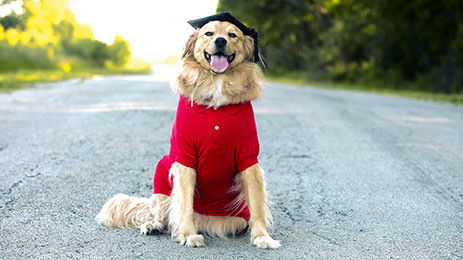The Advantages of Early Dog Training for a Mannerly Pet
The Advantages of Early Dog Training for a Mannerly Pet
Blog Article
Necessary Tips for Effective Dog Training: An Overview for Pet Dog Owners
Efficient pet training is a diverse process that calls for a strategic strategy customized to both the animal's character and the owner's purposes. Understanding how to browse these obstacles can considerably boost the training experience, inevitably changing the relationship between owner and canine.
Comprehending Dog Behavior
Comprehending canine habits is crucial for efficient training and promoting an unified partnership in between dogs and their owners. dog training. Pet dogs communicate primarily via body language, articulations, and actions, making it crucial for proprietors to interpret these signals precisely.

Socializing plays a substantial function in pet dog habits; direct exposure to numerous atmospheres, people, and various other pets can considerably affect a pet dog's character. Moreover, variables such as breed attributes and specific character ought to lead training techniques, as some types may have certain behavior traits that demand customized strategies. By understanding these elements, proprietors can develop a supportive atmosphere that motivates favorable behavior, causing successful training outcomes and a deeper bond with their animals.
Developing Consistent Commands
Efficient interaction with your canine starts with developing regular commands. This foundational aspect of training is important for cultivating understanding in between you and your pet dog. Uniformity in the commands you use ensures that your canine can accurately link details words or expressions with the wanted actions.
When selecting commands, choose clear, unique words that are easy to differentiate and claim from each other. Stay clear of using similar-sounding commands that may puzzle your pet dog. Utilizing "rest" and "stay" is ideal, but "rest" and "struck" might lead to misunderstandings.
Additionally, maintain the very same tone and quantity for each command. Pets are sensitive to singing hints, so differing your tone can create confusion.
It is similarly important to guarantee that all relative are on the very same page concerning the commands used. A united front in command usage will certainly protect against blended signals and enhance the learning procedure.
Positive Support Strategies
The power of favorable support in pet dog training exists in its capability to urge wanted actions with rewards and praise. This method is based in the concept that habits followed by beneficial outcomes are more probable to be duplicated. By including positive support right into your training routine, you can properly shape your pet dog's habits in a positive way.
To implement positive reinforcement, it's vital to determine what encourages your pet, whether it be treats, playthings, or verbal appreciation. When your dog carries out a preferred action, such as resting on command, quickly award them with a treat or affection. This association in between the command and the positive end result strengthens their understanding.
It's essential to timing the rewards correctly; providing the support within secs of the desired habits assists your pet make the connection (dog training). Furthermore, consistency is crucial-- ensure that all family members utilize the very same commands and benefit systems to prevent confusion

Slowly, you can decrease the regularity of treats as your canine discovers the actions, transitioning to praise or recurring incentives. This method not only fosters a solid bond between you and your pet yet likewise promotes a favorable discovering setting, making educating a pleasurable experience visit our website for both.
Socialization and Interaction
Constantly exposing your pet dog to a variety of settings, people, and various other pets is essential for their social development. Socializing needs to begin early, ideally during the crucial home window of 3 to 14 weeks, when young puppies are most receptive to brand-new experiences. Nevertheless, older pet dogs can likewise take advantage of ongoing socializing efforts.
Introduce your canine to different setups, such as parks, pet-friendly stores, and urban locations. This direct exposure helps them adapt to various stimuli, reducing stress and anxiety and anxiety actions. Urge positive interactions with various other dogs and individuals, making sure that these experiences are regulated and safe to cultivate self-confidence.
Use structured playdates with well-mannered dogs, as this can improve your dog's social abilities and instruct them appropriate habits. Obedience courses and training sessions also offer excellent chances for socializing, allowing your canine to engage with others in a monitored atmosphere.
Screen your canine's body movement throughout communications, as this will certainly assist you gauge their comfort degree. Gradually boost exposure to more difficult circumstances while ensuring that each experience declares. A well-socialized canine is most likely to exhibit balanced habits, making them a pleasure to have in any type of setting.
Dealing With Typical Training Challenges
Every dog owner will certainly run into training challenges eventually, no matter of their pet's age or socializing degree. Determining common concerns such as stubbornness, distractions, and terror can help in creating reliable methods have a peek here for enhancement.

Diversions throughout training sessions can thwart focus. To combat this, begin training in a peaceful setting with marginal stimuli. Progressively introduce diversions as the pet ends up being extra competent in commands. Short, constant training sessions are likewise reliable in keeping focus.
Fearfulness can hinder a canine's knowing procedure. Steady desensitization to the source of worry, coupled with positive reinforcement, can aid minimize anxiety. Perseverance is essential; never ever compel a pet dog into a situation that creates distress, as this may intensify the problem.
Inevitably, understanding and attending to these typical obstacles with an organized strategy will certainly promote a much more efficient training experience, enhancing the bond between pet dog and owner while promoting reliable learning.
Verdict
In summary, successful dog training counts on a detailed understanding of canine actions, the establishment of constant commands, and the application of positive support methods. Socialization plays a crucial function in developing well-adjusted pets, while resolving typical training challenges calls for persistence and flexibility. By applying these vital strategies, family pet owners can foster a solid bond with their canines and advertise preferable behaviors, inevitably bring about a harmonious partnership between people and their canine companions.
Understanding pet habits is vital for effective training and cultivating an unified connection in between dogs and their owners.Socializing plays a substantial role in pet behavior; exposure to various settings, people, and other animals can substantially affect a canine's personality.The power of favorable reinforcement in pet dog training exists in its capacity to motivate preferred actions with benefits and praise. By including positive support into your training routine, you can properly form your canine's actions in a useful fashion.
In use this link recap, effective pet training counts on a comprehensive understanding of canine behavior, the establishment of constant commands, and the application of positive reinforcement methods.
Report this page